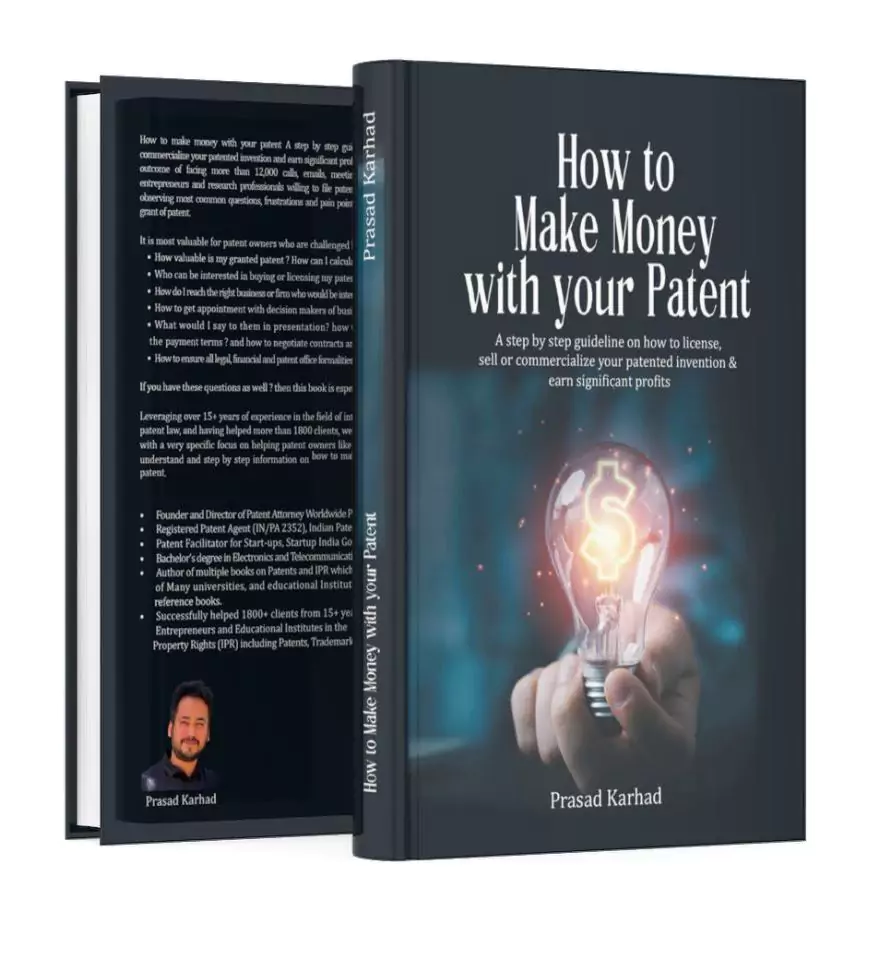Patent Licensing Income
Patent licensing is a lucrative way to generate income from your inventions. This article explores how to earn income through patent licensing, providing actionable guidelines to help you navigate the process.
Understanding Patent Licensing
Patent licensing involves granting rights to another party to use your patented invention in exchange for royalties or fees. This arrangement allows the patent holder to earn income while retaining ownership of the patent.
Why License Patents?
- Steady Income: Licensing can provide a continuous revenue stream.
- Market Penetration: Licensing allows your technology to reach wider markets.
- Resource Efficiency: Licensees bear the cost of production and marketing.
- Risk Mitigation: Licensing reduces the financial risk associated with manufacturing and selling products.
Types of Licensing Agreements
1. Exclusive License: Grants exclusive rights to one licensee. 2. Non-Exclusive License: Allows multiple licensees to use the patent. 3. Sole License: One licensee uses the patent, but the patent holder retains usage rights.
Evaluating Licensing Opportunities
Market Research:
Market research is critical in identifying the industries and companies that would benefit most from your patent. Begin by analyzing the market landscape to pinpoint sectors where your invention could provide a competitive edge or solve existing problems. Understanding current market trends and demands will help you tailor your licensing pitch to potential licensees, demonstrating the relevance and necessity of your patent. This research should include a thorough analysis of industry reports, market forecasts, and competitor activities to build a comprehensive understanding of where your patent fits into the broader market.
Patent Valuation:
Accurately determining the value of your patent is essential for successful licensing. Patent valuation involves assessing the commercial potential of your invention by considering various factors such as market size, existing competition, and technological advancements. A high-value patent typically addresses a significant market need or offers a unique solution that sets it apart from existing technologies. Additionally, the valuation process should consider potential revenue streams, cost savings, and the patent’s remaining life span to provide a realistic estimate of its worth.
Licensing Strategy:
Developing a robust licensing strategy is key to maximizing the benefits of your patent. Decide whether to pursue exclusive or non-exclusive licenses based on your business goals and the nature of your invention. Exclusive licenses can command higher royalties but limit the number of potential licensees, while non-exclusive licenses allow multiple companies to use the patent, potentially increasing overall revenue. Setting competitive royalty rates and favorable terms is crucial to attracting licensees and ensuring a steady income stream. Your strategy should also include clear guidelines for negotiation to protect your interests and foster long-term partnerships.
Negotiating Licensing Agreements
Royalty Rates:
Determining appropriate royalty rates is a balancing act that requires an understanding of industry standards and the specific value of your patent. Research typical royalty rates within your industry to establish a baseline and adjust based on the uniqueness and commercial potential of your invention. Higher royalty rates can be justified if your patent offers substantial benefits over existing technologies or if it operates in a highly lucrative market. However, setting rates too high may deter potential licensees, so finding a balance is crucial.
Payment Terms:
Establishing clear payment terms is vital for ensuring a steady revenue stream from your patent. Options include lump-sum payments, milestone payments, or ongoing royalties. Lump-sum payments provide immediate funds but may not capture the long-term value of your patent. Milestone payments tie income to the licensee’s progress, providing incentives for successful commercialization. Ongoing royalties, based on a percentage of sales, align your interests with the licensee’s success, ensuring you benefit from the patent’s commercial performance.
Licensing Duration:
Agreeing on the length of the licensing agreement is another critical aspect of negotiations. The duration should reflect the expected life cycle of the patent and the market dynamics. Shorter agreements allow for renegotiation and adjustments based on market changes, while longer agreements provide stability and security for both parties. The chosen duration should align with your strategic goals and the anticipated development and commercialization timeline of the licensee.
Performance Obligations:
Including performance obligations in the licensing agreement ensures that licensees actively commercialize your patent. These clauses can specify minimum sales targets, development milestones, or marketing efforts required to maintain the license. Performance obligations protect your interests by preventing licensees from sitting on the patent without utilizing it effectively, thereby maximizing the patent’s market impact and revenue potential.
Managing Licensing Relationships
Regular Monitoring:
Regularly monitoring licensee compliance with the agreement is essential for maintaining the value of your patent. This includes tracking the licensee’s adherence to payment schedules, performance obligations, and other contractual terms. Implementing a system for regular reporting and audits helps ensure that the licensee meets their commitments and that royalty payments are made on time. Effective monitoring protects your interests and fosters a productive and transparent licensing relationship.
Communication:
Maintaining open lines of communication with licensees is crucial for addressing any issues that may arise during the term of the agreement. Regular check-ins and updates help build a strong working relationship and provide opportunities to discuss any challenges or changes in the market. Transparent communication allows for timely resolution of disputes and adjustments to the agreement as needed, ensuring both parties remain aligned and satisfied with the partnership.
Audits:
Periodically auditing licensee records is an important practice to verify royalty calculations and ensure accurate reporting. Audits provide a means of confirming that the licensee is complying with the financial terms of the agreement and that you are receiving the correct royalty payments. Conducting audits also serves as a deterrent against potential underreporting and reinforces the importance of maintaining accurate records and transparency in the licensing relationship.
Dispute Resolution:
Including mechanisms for resolving disputes in the licensing agreement is essential for addressing conflicts that may arise. Dispute resolution clauses should outline the process for mediation, arbitration, or litigation, providing a clear path for resolving disagreements. Having predefined procedures in place helps prevent disputes from escalating and ensures that both parties can seek resolution in a structured and efficient manner, minimizing disruptions to the licensing relationship.
Actionable Guidelines for Patent Licensing Income
Evaluate Patents:
Assessing the commercial potential of your patents is the first step in maximizing licensing income. This involves identifying high-value patents that address significant market needs or offer unique solutions. Conducting a thorough evaluation of your patent portfolio helps prioritize which patents to license and focus your efforts on those with the greatest revenue potential.
Market Research:
Understanding industry trends and identifying potential licensees are critical components of a successful licensing strategy. Market research provides insights into current and future demand for your patented technology, helping you target the right companies. Identifying potential licensees involves analyzing their product lines, R&D activities, and strategic goals to determine how your patent can add value to their operations.
Licensing Strategy:
Choosing between exclusive and non-exclusive licenses and setting competitive royalty rates are key strategic decisions. Exclusive licenses can attract higher royalties but limit the number of licensees, while non-exclusive licenses offer broader market penetration. Setting royalty rates requires balancing the commercial value of your patent with industry standards to attract licensees while ensuring a fair return on investment.
Marketing Materials:
Preparing compelling marketing materials is essential for showcasing your patent’s value to potential licensees. Presentations should highlight the applications and benefits of your patent, demonstrating how it addresses market needs and offers a competitive advantage. Effective marketing materials help communicate the potential impact of your patent, making it more attractive to prospective licensees.
Network:
Building a strong network is crucial for connecting with potential licensees. Attend trade shows and conferences to meet industry leaders and decision-makers. Utilize online platforms and professional networks to reach a wider audience and establish relationships with companies interested in your technology. Networking helps expand your reach and increases the chances of finding suitable licensees.
Protect Rights:
Monitoring for infringement and being prepared to take legal action are vital for protecting your patent rights. Regularly review the market for unauthorized use of your patented technology and take swift action to enforce your rights. Protecting your patent ensures that you can fully benefit from its commercial potential and maintain its value in licensing negotiations.
Professional Advice:
Consulting with patent attorneys and considering the services of a patent broker can enhance your licensing efforts. Patent attorneys provide legal expertise and help navigate the complexities of licensing agreements, ensuring your interests are protected. Patent brokers can assist in identifying potential licensees and negotiating favorable terms, leveraging their industry knowledge and connections to maximize the value of your patent.
For more detailed information and guidance on how to make money with your patents, refer to our book “How to Make Money with Your Patent” by Prasad Karhad. You can find it here.
By following these guidelines and exploring various monetization strategies, you can unlock the full potential of your patents and generate substantial income from your innovations.
Book : “How to make money with your patent”
How to license, sell, or commercialize your patented invention and earn significant profits
Author: Mr. Prasad Karhad
Link for the book on Amazon: https://www.amazon.com/dp/B0CSPJXRZ5
- How to Check the Status of Your Patent, trademark, design, copyright applications in India, US, International and PCT - April 25, 2025
- Comprehensive Guide to Creating a Detailed Invention Disclosure Document - February 25, 2025
- Guidelines for Creating Drawings , Diagrams or flow chart for Patent Applications - December 27, 2024

